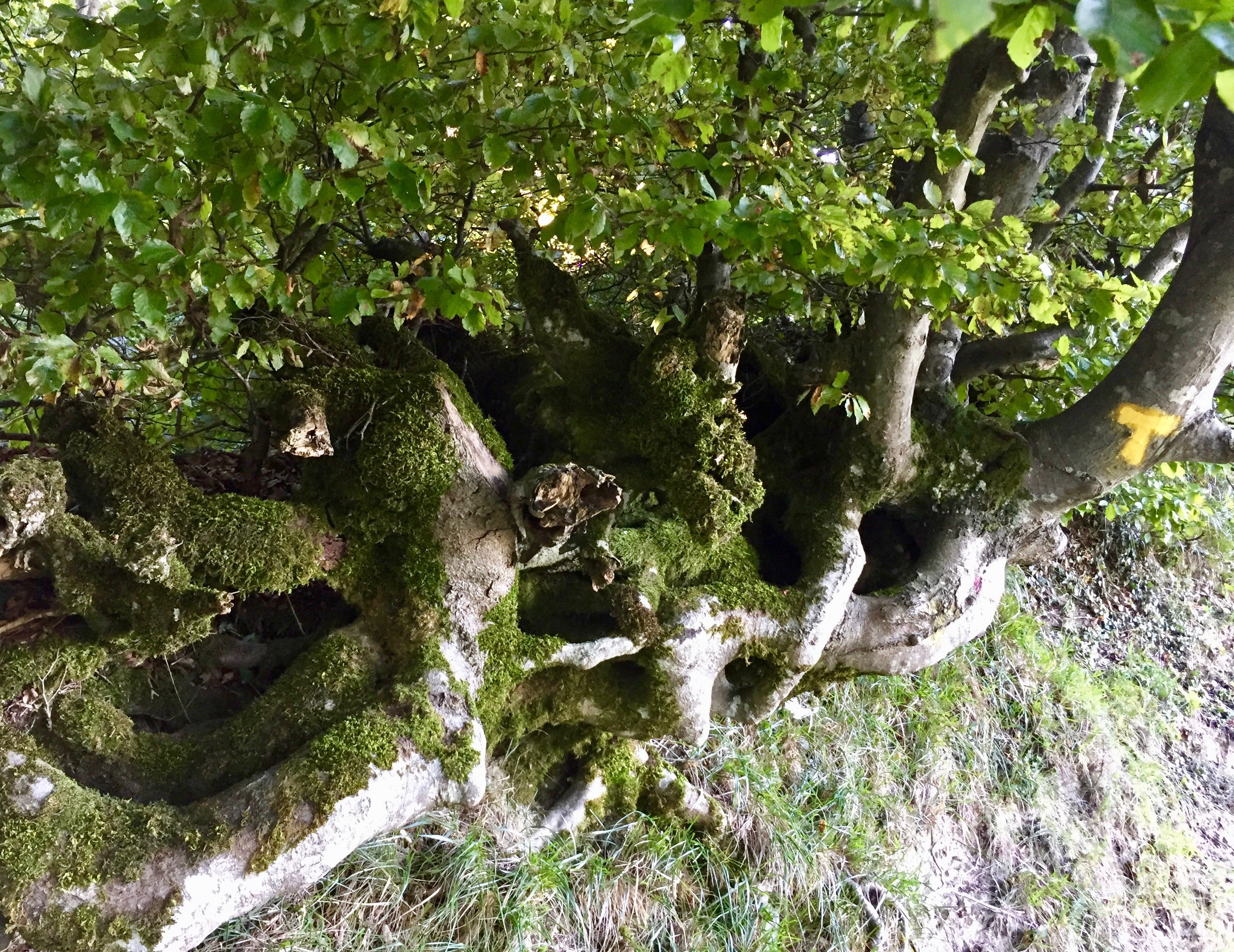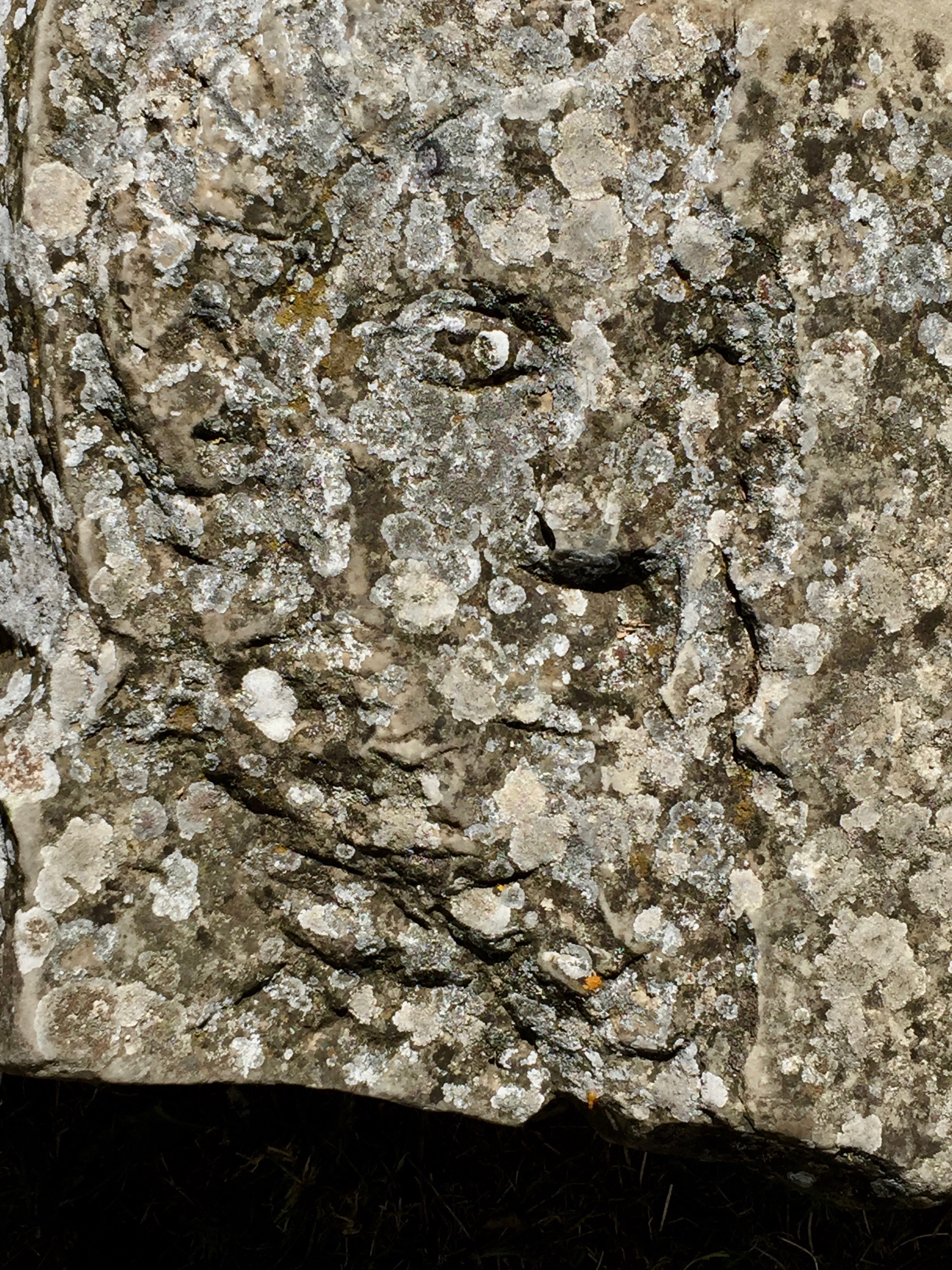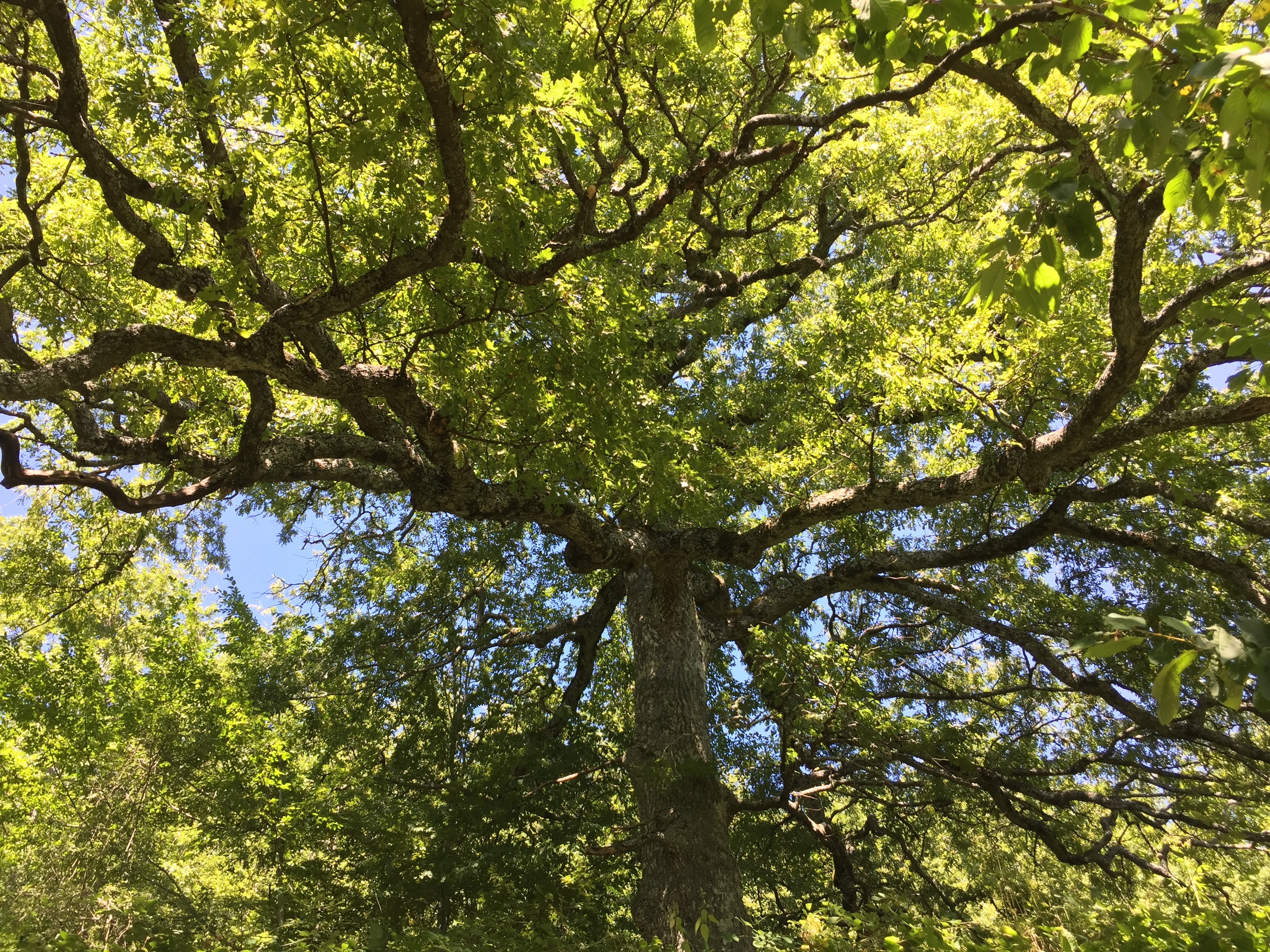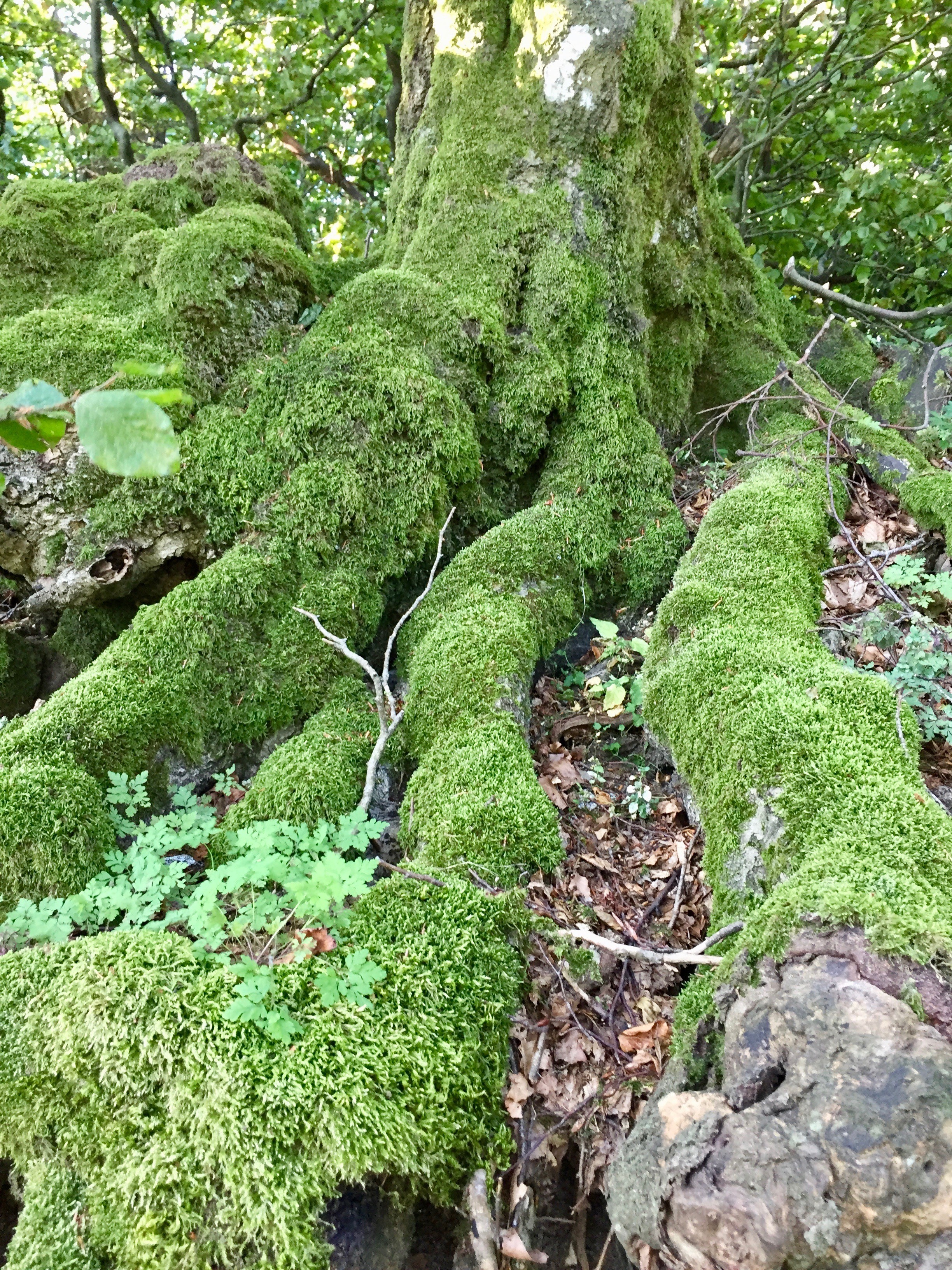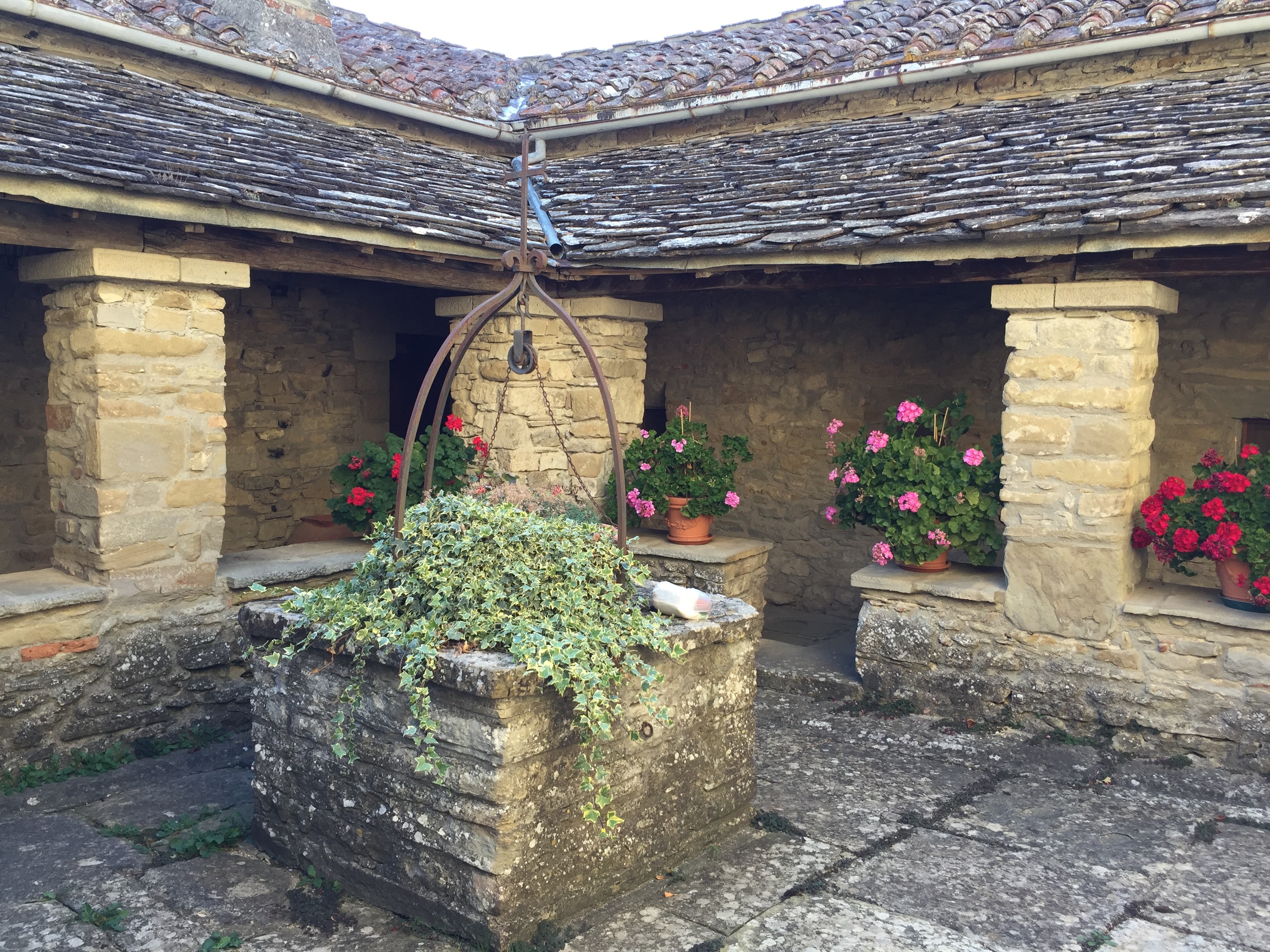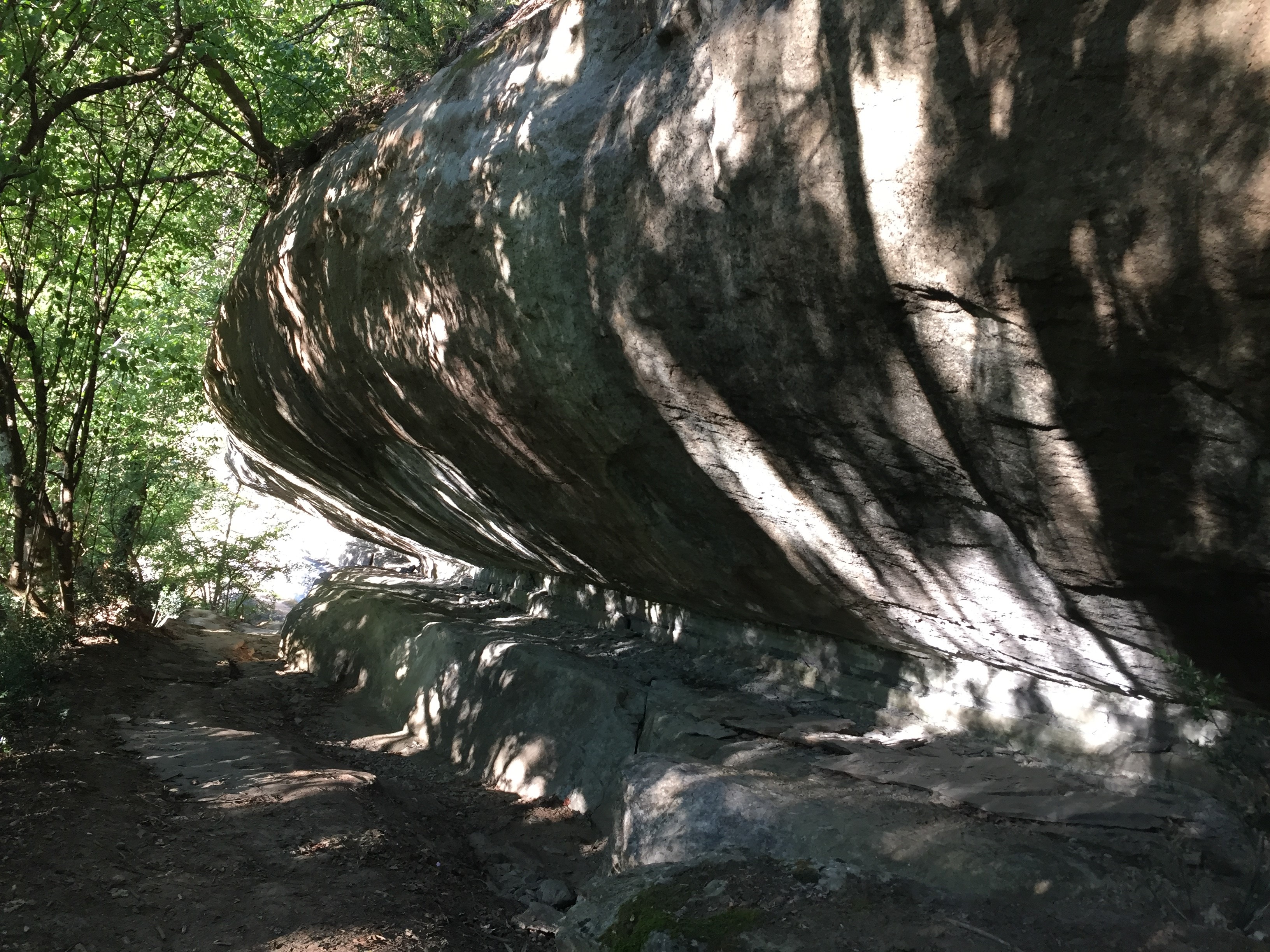(4)
Pilgrimage and the mind of not knowing
Walking on a pilgrimage is to allow the world to come forward in the experience of every moment. Being ready at any moment for what is there is to live in a mind of not knowing. A mind of not knowing needs trust – trust, that everything that arises each moment is okay and that you can handle it. Each moment is the best moment of your life, Katagiri Roshi once said. A pilgrimage is good training for this mindset.
When I left La Verna, I walked for about six hours through silent forests, open meadows, and rocky canyons. The weather was gorgeous.
Ripe fruit of a bush, the name of which I do not know
Ripe black blackberries, elderberries and rose hips grew along the way and every so often I stopped to collect a handful of fruit and let it melt in my mouth. All the time I followed the yellow sign of the Tau, the symbol for the way.
I stayed overnight in Pieve Santo Stefano, a little town in the valley beside the Tiber River. All the rooms were booked except in a hotel beside the highway – a huge, sterile box of a building with hardly any guests. What a difference to the beauty I experienced during the day! At least, I had a place to sleep.
After Pieve Santo Stefano, nature became even more magical. I visited Eremo di Cerbaiolo, a hermitage nestled like a pigeon’s nest high on a cliff.
Eremo di Cerbeiolo
After I lay down on an ancient stone under an elderberry tree, I saw a nice pattern in the stone. When I made a photo, a face looked towards me. It seemed to me as if St. Francis and St. Anthony (both spent time in this place) became present again.
Not only rocks, but also trees became intimately connected with me during this hike. “You have to love these trees,” the pilgrim Veronique said to me with a heavy French accent, when I could not stop making photos of these powerful beings.
The crown of this oak tree was humongous, but I could not totally capture it in the photo.
Rock and tree and roots were so connected that there seemed to be no difference anymore between them.
Moss-patched roots reaching into the ditch where a former Gothic house once stood
After sleeping in the Albergo Bar Imperatore, where the owner Lorean cooked a fantastic Italian meal, I continued my walk through the Apennine. For hours, I hiked through thick and healthy mixed forests, traversed an alpine meadow with the poetic name Alpe della Luna, and had a gorgeous view down into the valley.
It was evening when I arrived at the hermitage Montecasale, a place once given as a present to St. Francis. Above the entrance of the hermitage stood the words (translated): Here once lived three saints, St. Francis, St. Anthony, and St. Bonaventura. Here once lived three terrible robbers like saints. Therefore, blessings to those who are able to live here.”
A story about St. Francis explains these words. Once there were three robbers who knocked on the door of the hermitage. They begged for food. The monk who lived there chased them away with the words that they did not deserve any food because of their past actions. St. Francis arrived shortly after that, carrying bread and wine with him. When he heard this story, he ordered the monk to look for the robbers and bring them his food. Only kindness, he said, transforms the human being.
When I arrived at the hermitage, I had another problem – it was already 7 pm and I did not have any place to sleep. I met a monk in the chapel and asked him if I could stay overnight (I knew that only men were allowed to stay, but asked anyway). He was so kind to offer me a place in the refectory – a huge room with wooden benches and tables – but I decided not to stay there and to continue. Before I left, he went into the kitchen to give me a cake, a banana, and an apple for the way, uttering the words in broken English “you might not find a place for dinner anymore today! Please take this!” I was touched by his kindness.
I still had two hours to walk to reach the city Sansepolcro. However, there was a bed and breakfast place only 20 minutes down the mountain, though I could not reach anybody on the phone. So I hiked a gorgeous steep mountain path down towards the valley and passed on my way the favorite place of St. Francis, called Sasso Spicco.
Sasso Spicco
After Sasso Spicco, I got lost! I could not find my way! I followed one path, returned, followed another one, and was not sure if I should hike up the steep mountain back to Montecasale. Finally, I found the yellow Tau sign. Around 8 pm I arrived back at the bed and breakfast place and was very lucky! They had a room available for me and then even prepared dinner. It was one of the most charming places I stayed in during the three weeks of my walk.
Dinner at Agriturismo Le Burgne
Being open to the unexpected is one of the key elements of a pilgrimage. Although I did some planning, mainly connected to where I would sleep, I stayed flexible and open otherwise. It was exactly the mind of not knowing that made every moment fresh and full of life.
With the coronavirus, the mind of not knowing and uncertainty has rolled over the globe like a huge tsunami. Nobody expected it. Nobody could imagine its enormous impact on everyday life. How do I allow the world to come forward in every experience, when it is full of uncertainty, of not knowing?
During the pilgrimage, my main activity was walking, an activity of the body connected with all of my senses. Walking gave structure to the whole day and allowed me to be fully connected with my senses. Now, in quarantine, I try the same. I meditate, being aware of my breath. I do walking meditation, feel the cool green grass on my bare feet, the limbs moving, feel every step connected with the breath. Walking is reduced to a tiny area, but the awareness of walking is much more heightened. I connect with my surroundings more intensively and suddenly see things I never realized before.
Just being connected, however, is not enough to meet unexpected situations and uncertainties on a pilgrimage. During the thousands of miles I have walked, there developed an inner strength – this strength is trust in life. Whatever might come, I trust in life. This trust is like the trees I saw during my pilgrimages. I imagine and also feel that I am one of the trees I saw, deeply rooted and strong enough to encounter unexpected storms, drought, and heat. Whatever might come. I trust in life.
Often on my pilgrimages, I take poems with me. Before I left for the Camino Franciso, I dedicated the poem below by Mary Oliver to the entire pilgrimage. Its message is also a message for me during quarantine.
The Summer Day
Who made the world?
Who made the swan, and the black bear?
Who made the grasshopper?
This grasshopper, I mean-
the one who has flung herself out of the grass,
the one who is eating sugar out of my hand,
who is moving her jaws back and forth instead of up and down-
who is gazing around with her enormous and complicated eyes.
Now she lifts her pale forearms and thoroughly washes her face.
Now she snaps her wings open, and floats away.
I don’t know exactly what a prayer is.
I do know how to pay attention, how to fall down
into the grass, how to kneel in the grass,
how to be idle and blessed, how to stroll through the fields,
which is what I have been doing all day.
Tell me, what else should I have done?
Doesn’t everything die at last, and too soon?
Tell me, what is it you plan to do
With your one wild and precious life?


